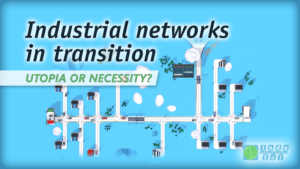Many developments simply follow a logical progression. Amazon is a prime example of this. From the modest concept of an electronic bookstore, Amazon has grown into the world’s largest universal online mail-order company, which now offers countless complementary products such as the Kindle e-book reader, services such as Amazon Prime with its video-on-demand platform, and has even launched its own publishing house and retail shops. A success story that simply followed economic developments with a good instinct for the market and thus got the most out of the company – economically and future-proof.
 This transition could be adapted to any other company as well. In order to optimise production and be able to respond extremely flexibly to customer demands, companies with industrially automated plants not only depend on economic development, but also on technical progress. Large volumes of data (big data), high-performance communication (5G), storage and management systems such as cloud computing are now in use in many industries; in other words: Industry 4.0 and digitalisation have arrived.
This transition could be adapted to any other company as well. In order to optimise production and be able to respond extremely flexibly to customer demands, companies with industrially automated plants not only depend on economic development, but also on technical progress. Large volumes of data (big data), high-performance communication (5G), storage and management systems such as cloud computing are now in use in many industries; in other words: Industry 4.0 and digitalisation have arrived.
If you look one step closer into automated plants, you will find the heart of the plant, the communication system, which is, for instance, operated with PROFINET. Here one might inevitably ask the question, what has changed here? Hopefully a lot, because healthy change happens from the inside out!
In order for the network to work efficiently despite high, sometimes irregular data traffic and to run reliably in terms of security, the structures must be adapted. The pitfalls and simple solutions for this are explained in a nutshell in the video “Industrial networks in transition – utopia or necessity?” by Indu-Sol. Using a simple analogy to an industrial estate with factories and roads, the audience experiences the transformations of a production network that was still isolated at the beginning (homogeneous) to a highly interconnected system of various OT networks (heterogeneous) to the point of connection to IT, the WWW and other ERP systems (convergent), and that everything can ultimately function smoothly.
